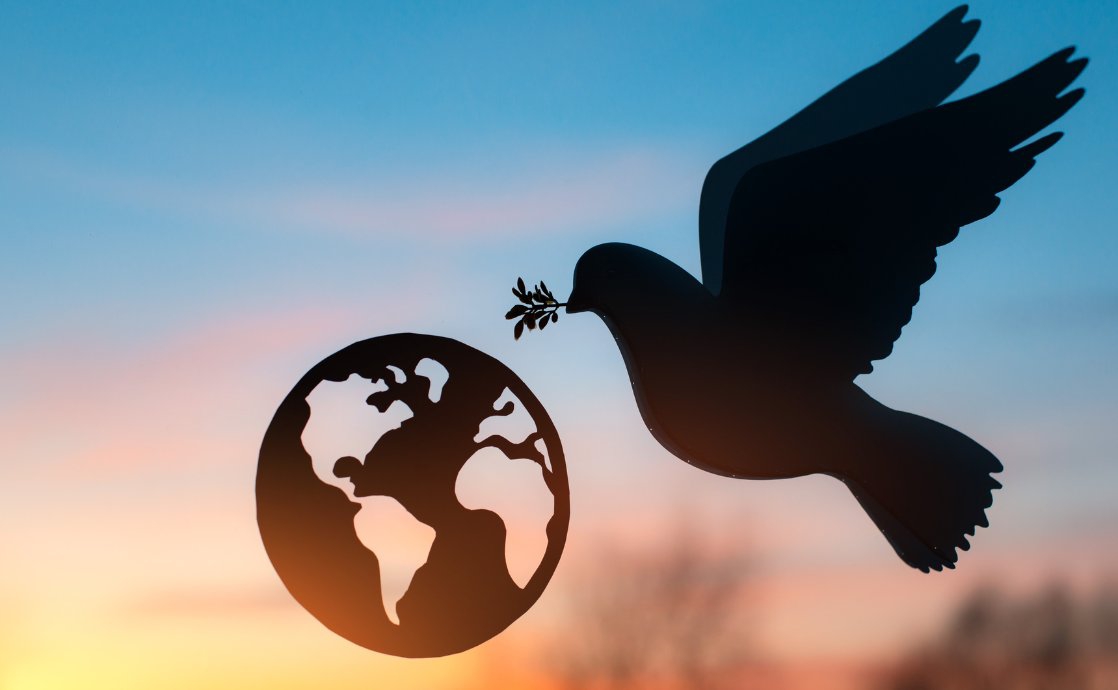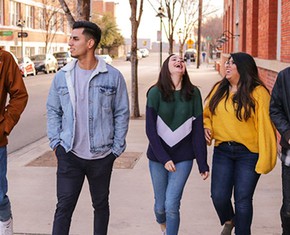The views expressed in our content reflect individual perspectives and do not represent the authoritative views of the Baha'i Faith.
The purpose and goal of the Baha’i Faith is to unify all the peoples of the world. Baha’u’llah, the prophet and founder of the Faith, wrote:
My object is none other than the betterment of the world and the tranquillity of its peoples. The well-being of mankind, its peace and security, are unattainable unless and until its unity is firmly established.
RELATED: How Do Baha’is Plan to Change the World?
Toward this noble end, the worldwide Baha’i community has recently begun an ambitious series of plans, spanning the next quarter-century and focused on “a single aim: the release of the society-building power of the Faith in ever-greater measures.”
These far-reaching plans, formulated by the democratically-elected global leadership body of the Baha’is, the Universal House of Justice, include the first of the series, the current Nine Year Plan, which highlights the importance of “transcending differences” and speaks of the human need for “harmonizing perspectives.”
What does “society-building power” really mean? It means constructing a world order that prioritizes peace, justice, and harmony among all people, cultures, and religions. Because of the world’s current spate of war, injustice, racism, school shootings, hate crimes, mass murder, and violent tribalism, the mandates of the Nine Year Plan have become increasingly urgent. Abdu’l-Baha, Baha’u’llah’s son and successor, said:
Call none a stranger; think none to be your foe. Be ye as if all men were your close kin and honored friends. Walk ye in such wise that this fleeting world will change into a splendor and this dismal heap of dust become a palace of delights.
Abdu’l-Baha’s statement to “think none to be your foe” and to “be as if all men were your close kin” provides us with a succinct and clear statement of what the social sciences call your “stance” toward others. Your stance – your attitude and assumptions – determines the nature of your relationships with people.
If you see yourself as the center of your own universe and others as “out there,” different and distant from you, or maybe even see them as a threat, it means that you’re operating from a first person/third person perspective – me vs. them. Right away, this “othering” perspective raises the probability of conflict.
When I don’t really know you, but decide to form an opinion of you, I literally have to make things up about you based on my preconceived ideas. Maybe I mistakenly judge you based on the color of your skin, or where you live, or what I’ve heard about you. Maybe it’s my own experiences from the past that pop up and drive my prejudices and pre-conceived notions. The list of bits and pieces that can sow the seeds of an imaginary “other” is endless. Since our primitive survival instincts tell us that the unknown is frightening, so often the drift toward seeing others as a threat becomes automatic.
But there is another perspective available, the one suggested by Abdu’l-Baha – a perspective that does not begin with a stance of separateness. It does not objectify others or create enemy images. It is the perspective of innocent children when they meet other children. It is the perspective we all automatically, instinctively, and unconsciously take when interacting with a friend. It is called the “second person perspective.”
Authors Diana I. Pérez and Antoni Gomila in Social Cognition and the Second Person in Human Interaction distinguish the second person perspective (us) from the first person (me) and the third person (you).
Second person interactions happen when two or more people interact with each other face-to-face and in real time What one person does or says impacts the other, and vice versa. Each one notices and processes, often unconsciously, the movements, facial expressions, voice inflection, and emotions of the other – as well as one’s own thoughts and feelings as the interplay unfolds. A “mutual adjustment” is in continual play as one or the other notices the approving look, the disapproving look, the questioning raised eyebrow, or the expressions of compassion, understanding, and kindness.
If we imagine two new acquaintances who decide to meet for coffee at a café, we can watch them through the window during their second person interchange. They speak face-to-face and focus all their attention on each other during all the time they speak. They listen intently to each other, showing great interest. They watch each other’s faces, noticing what is conveyed in each other’s eyes. They register the stream of emotional messages conveyed within the split-second shifts that occur as they focus on one another and assess each other’s intentions. As one speaks the other carefully listens. Their response is not preconceived or “canned,” but happens spontaneously and in-the-moment, evincing a heartfelt reaction to what the other is saying. This dance of back and forth continues for some time. As the mutual experience unfolds each participant is changed by it – maybe a lot, maybe just a little.
Developmental psychologists explain that moments like these begin immediately after birth, when an infant first meets parents or caregivers, and continue throughout the human lifespan. Through such experiences the mind is formed, cognitive abilities emerge, and relationship possibilities are bounded. The second person perspective is so synonymous with what it means to be a human being, until recently it has been largely overlooked by researchers.
RELATED: How You Can Build Global Unity From the Grassroots Up
From the second person perspective, society building, as called for in the Nine Year Plan moves out of the realm of the abstract and comes to roost, right here, right now, and every day. It is not overwhelming or something for others to do. In fact, it is so familiar, it might easily be squandered in the busyness of the day.
How many times do we speak to someone without even looking at them, or answer questions while looking at our phones? Do we treat the clerks, salespeople, and merchants we encounter like animated machines rather than human beings? How often do we look at another human being without really “seeing” them?
Abdu’l-Baha was known for just the opposite. He gave, and exemplified, this guidance for all people:
When a man turns his face to God he finds sunshine everywhere. All men are his brothers…
I ask you not to think only of yourselves. Be kind to the stranger… Do not be content with showing friendship in words alone, let your heart burn with loving kindness for all who may cross your path.
Abdu’l-Baha connected deeply with each and every person he met, focusing on their inner beings rather than their outward characteristics. We can strive for the same. Each day, each time we encounter another person, all of us have the opportunity to contribute to the society-building power of world unity that is the goal of the Baha’i Faith by adopting the mental state Abdu’l-Baha called “loving kindness for all who may cross your path.”
Try to practice it today, and tomorrow. It will change your life, and ultimately, when enough of us do the same, it will change the life of the entire world.
















Comments
Sign in or create an account
Continue with Googleor